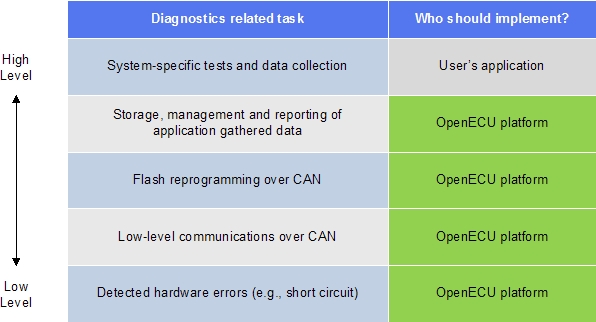The legislated requirements for the infrastructure to manage on-board diagnostics data has grown steadily over the years. This section describes the OpenECU approach to providing that support in a flexible way. This allows the users of OpenECU and related systems to concentrate on the system they are developing and at the same time meet the legislated requirements for emissions related control systems.
The diagnostic infrastructure support has been designed to meet both CARB and EURO diagnostics requirements and communicate with scan tools according to both heavy duty (J1939) and passenger car (ISO15765) protocols. It is aimed at vehicles which have to comply with 2010 and beyond legislation (eg EURO6).
It is important that the user understands general OBD terminology and the interactions between the various SAE/ISO standards and emissions/OBD legislated requirements. The standards are generally very good at describing their own terms and acronyms; therefore they have not been repeated here. There is no substitute for reading the relevant standard. A quick browse is absolutely essential, so that you will know where to look when the time comes for more detailed information.
The term diagnostics can be taken to mean many different tasks on different levels. The following diagram shows some of these. Details of how the user's application has to interact with the OpenECU platform are described below.
